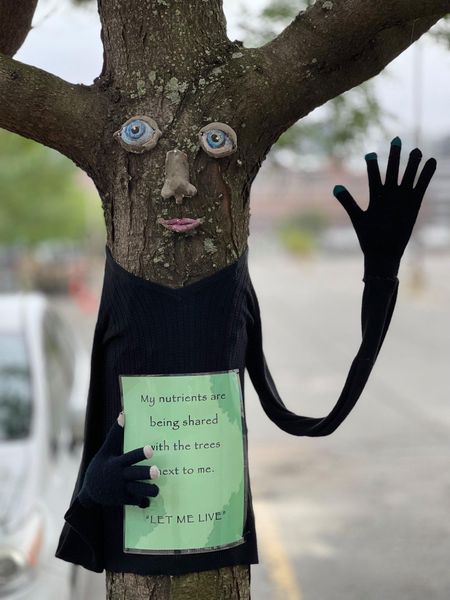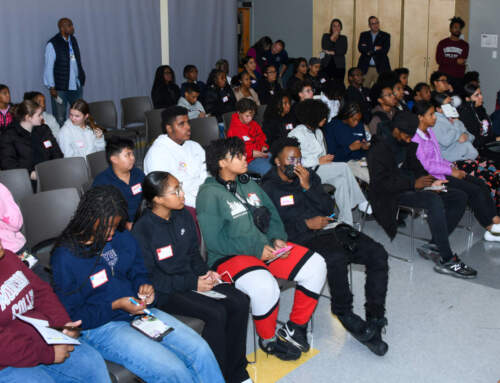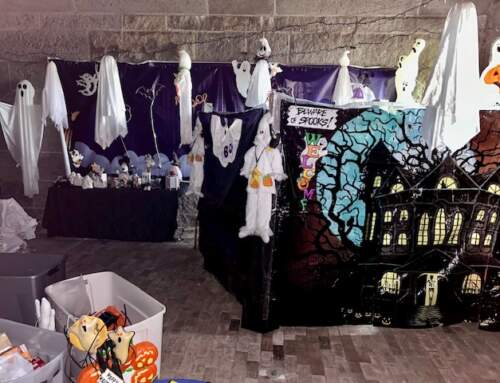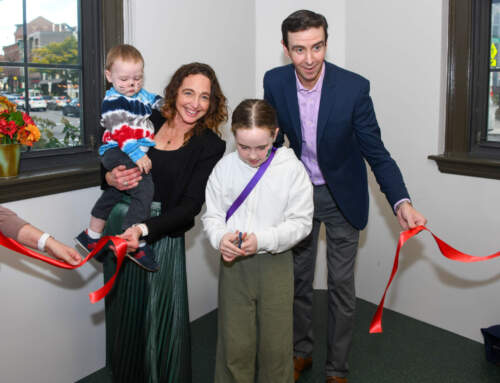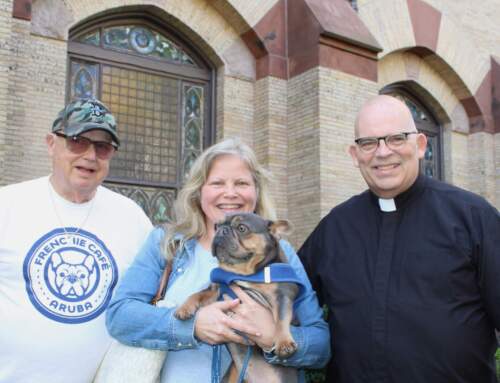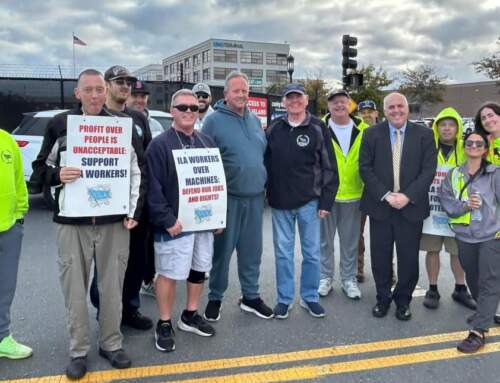Fort Point residents Rocco Giuliano and Philip Manna are working to save the 39 honey locust trees slated to be bulldozed on the site of Related Beal’s proposed ChannelSide development.
Incorporating signs with tree facts, banners, and prayer flags, the duo from the 249 A Street Visual Artists Cooperative is raising awareness and fighting for the trees, which are tabbed to come down for the new development at 244-284 A Street.
“Phil and I love those trees,” Giuliano said. “They are very beautiful trees.”
In discussions with Stephen Faber, the executive vice president of Related Beal, and landscape developer Robert Adams of Halvorson, “it became apparent to us … that they intended to just destroy all these trees,” Giuliano said.
Giuliano told them the trees are on the absolute edge of their property and asked why they couldn’t design the property with the trees. “They’re already there,” he said, noting what it really comes down to is the developers want to start with a clean slate.
According to the BPDA website for the project, the developer acquired the project site from the Gillette Company in 2019. The project calls for a mixed-use development totaling approximately 1.1 million square feet to include a residential building, an office building, and a laboratory/research and development building. The project is also supposed to include new parks and open space.
Landscape architect Adams said he hates for any tree to be removed but said the project will repopulate 150-plus trees. “We’re doing some substantial improvements,” he said, noting that not all of the current 39 trees would be removed. “This project is doing a lot of good. It will be a really positive impact.”
In an email exchange with Giuliano, project developer Faber said his preference would be to leave the trees where they are, but it is not possible. “Our experts have reviewed the viability of transplanting and concluded it is such a low probability of success that it is not appropriate. We will be adding literally dozens of trees on the site, to the streets, parks, and other open spaces.”
Faber said the trees will be removed because they are in conflict with meeting the objectives of the project, including safer streets and sidewalks for bicycles, pedestrians, and handicapped access. Giuliano contends that because the trees are on the periphery of the property, it makes preserving and incorporating them into the plans easy.
Manna said the developers would argue that planting new trees to replace the old ones would be a wash. “But in response, what we say is these trees are never as large and as mature and as beautiful as the ones that are already there.”
Manna took a tree inventory, and the vast majority of them have a diameter between 6 and 12 inches. “They’re substantial trees,” he said.
Adams said they developed a park on A Street and even though those trees have only been in the ground for seven years, they are big and make an impact.
The removal of the trees is a larger South Boston issue as well, Manna said. “South Boston has the third-lowest amount of tree canopy in the city behind downtown and East Boston. By removing 39 trees, you’re removing probably the majority of the tree canopy here in Fort Point. So it also impacts the South Boston neighborhood in general.”
Manna was inspired to create his awareness campaign after seeing the community efforts against the removal of trees on Melnea Cass. Manna’s signs describe facts about the benefits of trees to both the environment and to people. Manna, a former science teacher in Boston Public Schools and an educator with the Museum of Science, did some research and created the signs.
Some of the signs say:
- I add to the diversity of birds in the neighborhood.
- I lower stress and raise property values.
- I provide one day’s worth of oxygen for a family of 4.
- I will absorb one ton of carbon dioxide over my lifespan.
- I capture 1,000 gallons of rainwater each year.
- I absorb 11,000 miles of car emissions over my lifespan.
- Kids living in places with more trees have a lower chance of asthma.
Each sign also says, “Let me live.”
While Manna put up the signs and flags, other people made the trees into people with eyes to personify them. Somebody altered the banner Manna created with a green Magic Marker, changing the word “developer” to “gentrifier.”
The neighborhood has done its share of letter writing and working through the BPDA documents.
Though the comment period is over, the duo still has hope. “I think what gives us hope … is the new administration here in the city,” Manna said. “Mayor Wu seems to be more open to a greener, more transparent development planning process.”
Adams said they are always open to public engagement and are happy to get input.
Moving forward, Manna and Giuliano will continue to raise awareness, generate interest, and reach out to elected officials.
“I find it difficult to understand how these people, in good conscience, can destroy these trees,” said Giuliano, a script writer for documentaries and short films. “Not only because they are so beautiful – but they are healthy, mature trees. It’s difficult for me to picture them saying, ‘OK, bring on the chainsaws and steamrollers.’ ”
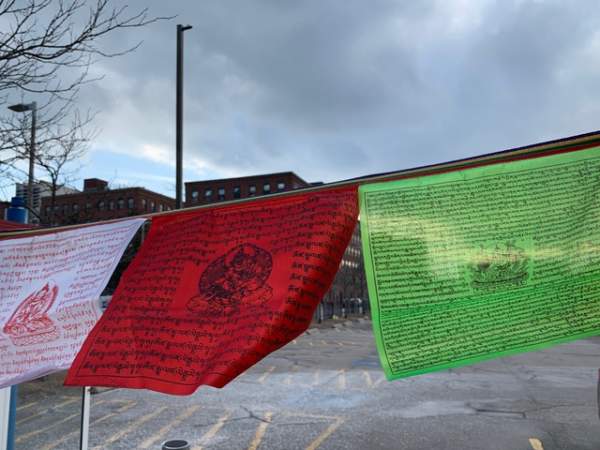
Prayer flags waving
Between the Honey Locusts
Whisper Let them live
– Rocco Giuliano

